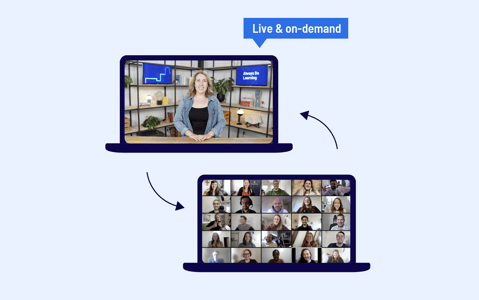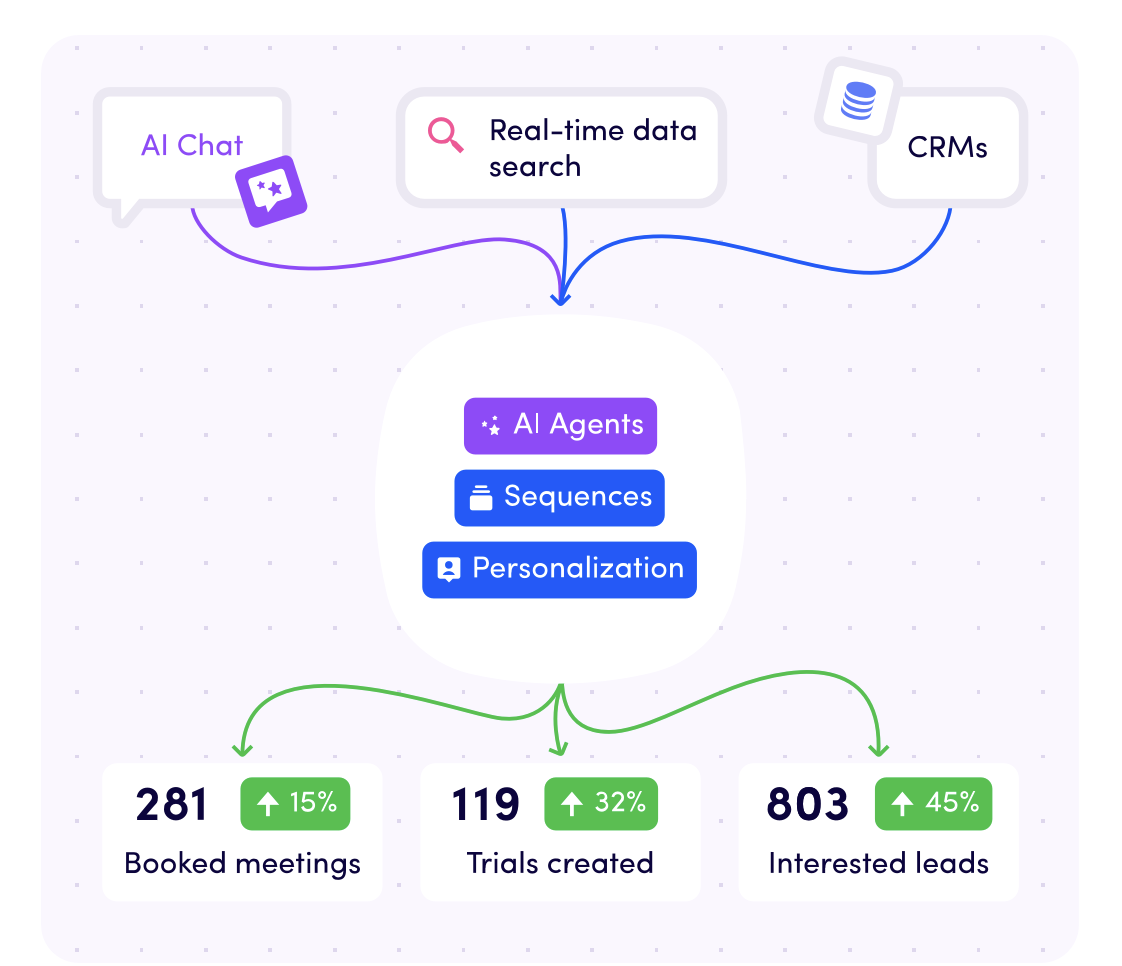Blended learning, or as we like to call it, the dynamic duo of traditional and digital learning, is a game-changer in the education arena.
So, what exactly is this powerful tag team?
In not-so-simple terms, blended learning is the love child of old-school classroom instructor-led training and the tech-savvy world of eLearning with online resources.
It's a perfect blend of live interaction and the convenience of online education with pre-recorded resources. It's like having the best of both worlds, creating a learning experience that's tailored to everyone's needs.
But ...
It isn't just a mix of live and on-demand sessions; it's a symphony of learning formats.
Online resources, webinars, whitepapers, YouTube videos, knowledge-sharing meetups, one-on-one coaching – you name it, and it can be seamlessly woven into a blended learning solution.
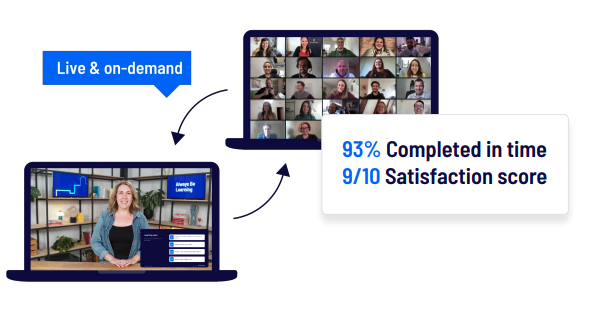
Why blended learning is ideal for corporate training
In the realm of corporate training, where the stakes are high and adaptability is key, a blended education emerges as the unsung hero.
Let's unravel the secrets behind this dynamic duo.
1. Tailored learning activities
Corporate landscapes are diverse, and so are the learning needs.
Hybrid learning allows organisations to customise learning activities, ensuring that employees receive tailored content that aligns with specific job roles and skill requirements.
It's like having a personalised roadmap for professional development.
2. Cost-effective learning
In the corporate world, every penny counts. Online learning cuts down on training expenses significantly.
From reducing travel costs for in-person sessions to minimizing the need for physical training materials due to the online courses.
The blended learning approach is a budget-friendly approach with improved quality of learning.
3. Flexibility for busy schedules
Corporate warriors often juggle hectic schedules. Online learning provides the flexibility employees need for self-paced learning.
Whether it's accessing online instruction videos during a lunch break or attending a virtual workshop after hours.
It ensures that learning fits seamlessly into the professional routine.
4. Real-time feedback and assessment
Traditional training methods often lack real-time feedback.
Hybrid education introduces assessment tools and analytics, allowing organisations to track learning outcomes, and progress and identify areas for improvement promptly.
It's like having a GPS for skill enhancement.
5. Engagement and retention
Keeping employees engaged is half the battle.
Hybrid learning leverages the power of multimedia and interactive content, making the learning experience engaging and memorable.
Blended education is not just about ticking off a training checklist; it's about creating an environment where knowledge sticks.
6. Adaptability to tech trends
The corporate landscape is ever-evolving, and so is technology.
Blended learning seamlessly adapts to emerging tech trends, ensuring that training methods stay current and effective in the face of rapid advancements.
It's the bridge between traditional training methods and the innovative future of workplace learning.
In the fast-paced corporate training world, blended learning strategies aren't just an option; it's the strategic advantage that propels organizations toward success.

Types of blended learning models
There are many different types of blended learning models. We're highlighting the 5 most common here below.
Let's take a look at some of these blended learning methods. 👇
1. Flex model
The flex model is a digital classroom powerhouse that hands the reins of learning over to the learners.
This model provides learners with pre-recorded lectures or online modules to explore and learn the content at their own pace when it suits them.
Next to the on-demand part of the learning journey, the flex model introduced dedicated interactive discussions to ask questions to the subject-matter-expert.
Learners have control, navigating their way through material at a pace that suits them. This fosters a sense of ownership over the learning process.
It's also a win for flexibility, allowing students to balance education with other aspects of their lives.
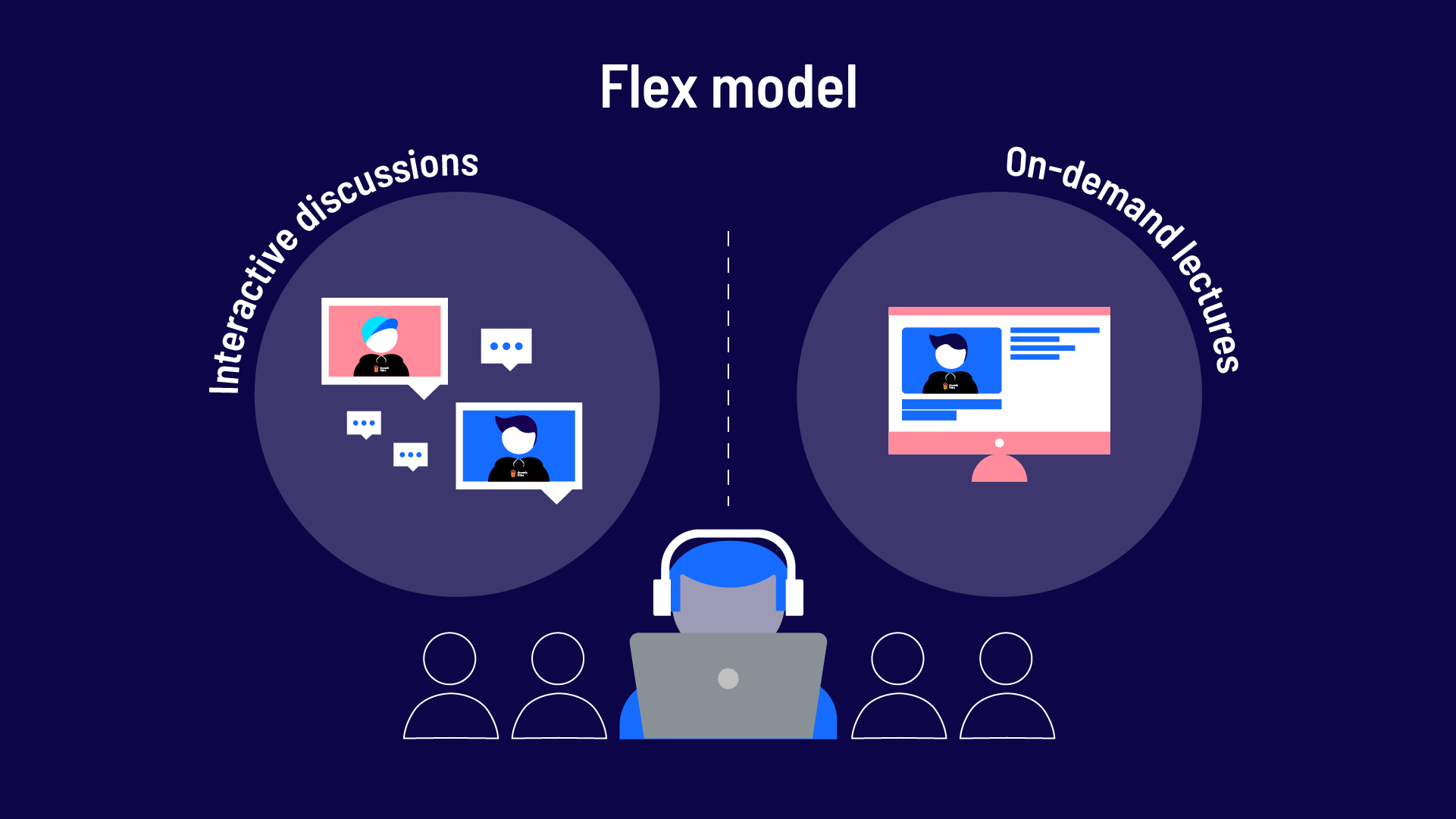
2. Flipped classroom model
Welcome to the Flipped Classroom Model, the revolutionary twist on traditional instruction that's turning education on its head.
With this approach, students dive into the material before even stepping foot in the classroom.
No more nodding off during lectures; instead, learners absorb concepts independently, making class time a dynamic arena for discussion, clarification, and problem-solving.
So, how does it work?
Lectures go virtual, and students get a front-row seat at home.
The classroom becomes an interactive hub where they apply and extend their newfound knowledge through hands-on activities.
Teachers, in this model, become mentors, providing personalised support and guidance. Students can dive into more complex problems in class.
It's a win-win, with teachers gaining insights into individual needs and students actively engaging in the learning process.

3. Rotation model
With the rotation model, learners cycle through a variety of learning modalities, ensuring a diverse educational experience.
Think of in-person teaching, online activities, small-group discussions, and independent studying.
The rotations can follow a set schedule or adapt based on the learners' progress, providing flexibility that caters to various learning styles and preferences, enhancing the most optimal learning outcomes.
Unlike flex learning, where learners decide their preferred methods, the Rotation Model places flexibility in the hands of instructors, determining the sequence of learning modes.
Learners transition between traditional face-to-face instruction and online components, capitalising on the strengths of both approaches.
With predetermined yet adaptable schedules, this blended learning environment enables
- Educators to personalise instruction.
- Address diverse learning styles.
- Encourage independent exploration.
- Fostering collaboration among learners.

4. Online driver model
In this model, traditional classrooms are eliminated.
Student learning is done in virtual classrooms, accessing course materials, engaging in online discussions, and collaborating with peers through digital tools.
It's a shift where face-to-face instruction takes a back seat, and learners navigate their educational journey in an online community.
Face-to-face check-ins are optional, making it ideal for those craving flexibility and independence in their schedules.
This learning path is ideal for students who need more flexibility and independence in their daily schedules.
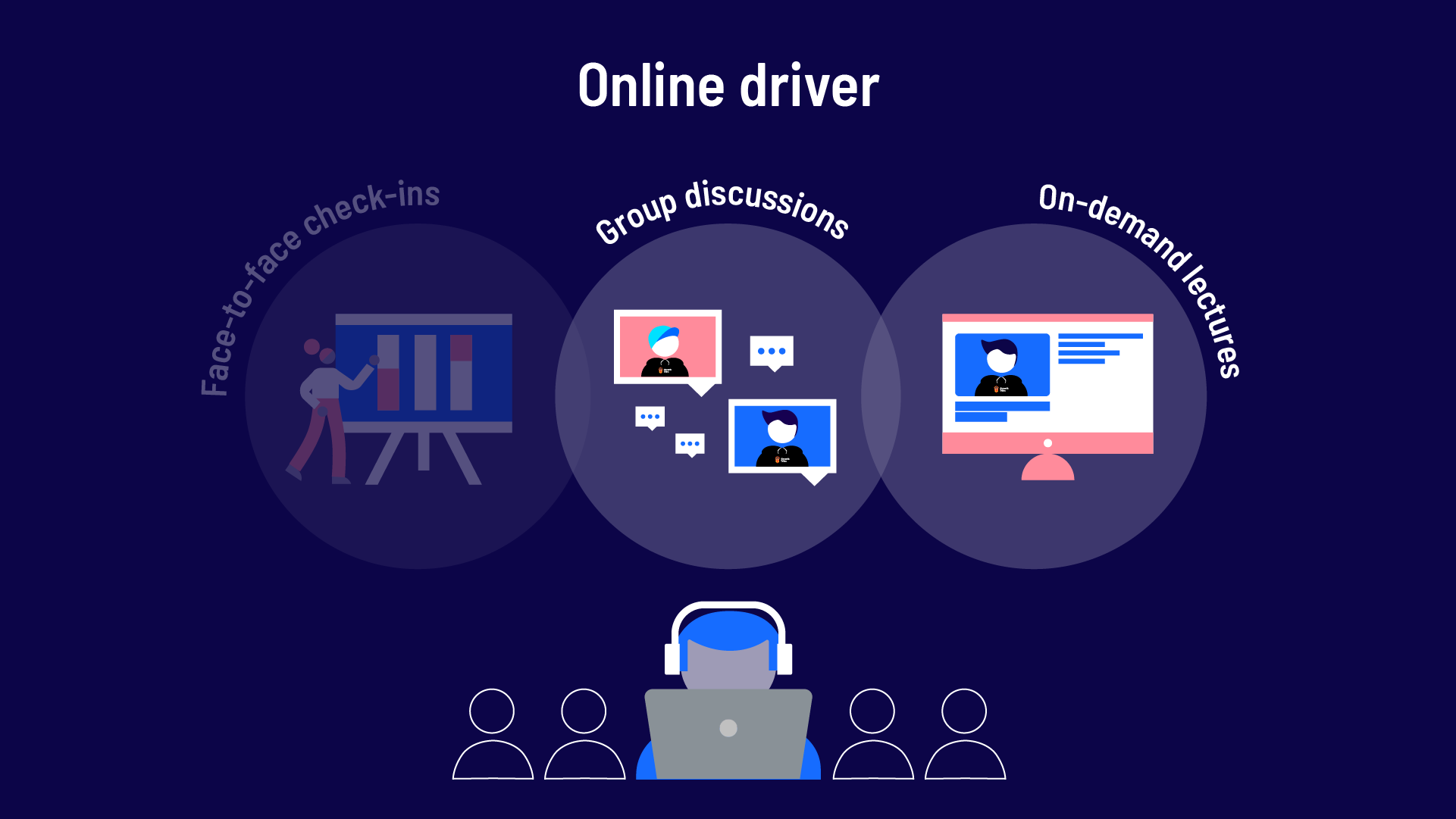
5. The flipped model
The Flipped Model, a transformative twist on traditional classroom-based learning, flips the script on learning.
Students first dive into instructional content outside class – think video lectures, readings, or online modules.
Then, precious in-class time transforms into a hub of active learning, discussions, group projects, and exercises that reinforce the pre-learned material.
The Flipped Learning Model provides learning resources before virtual class sessions, often distributed via a Learning Management System (LMS).
This alternative caters to cohorts craving active, live classroom engagement, demanding more from instructors but promising heightened preparedness and interaction among learners.
The flipped process empowers employees to actively apply knowledge, fostering deeper comprehension through meaningful interactions.
It's a harmonious blend of self-directed learning and in-person engagement, resulting in elevated employee engagement, knowledge retention, and skill development.
As organisations navigate the sea of blended learning models, the key is flexibility.
Each model has its merits, and it falls on L&D teams to leverage knowledge, LMS data, and learner feedback to tailor a strategy that aligns with organizational training goals, sans undue pressure on trainers.
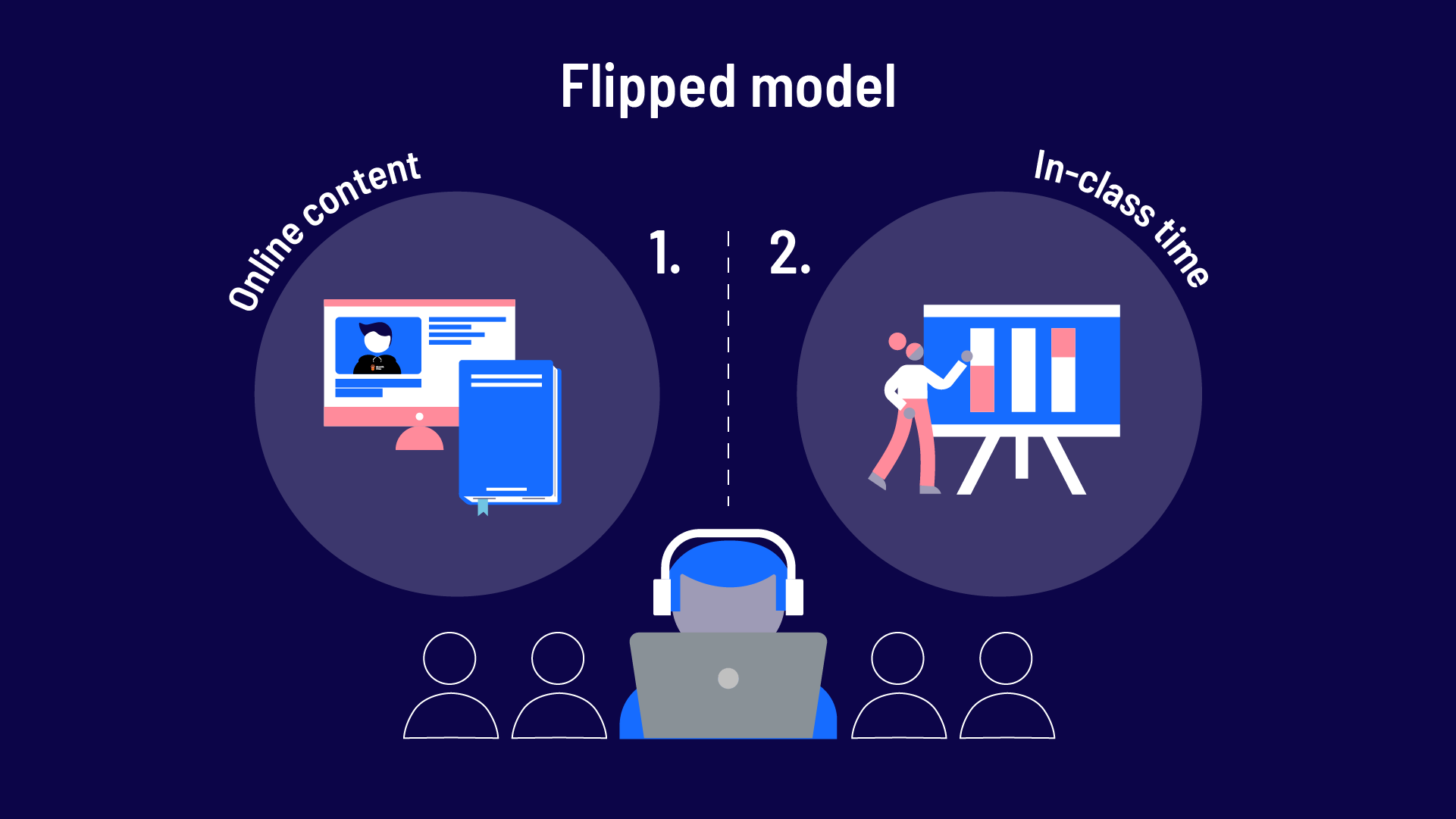
Want to learn more about our blended learning approach?
We’re a digital learning partner for both individuals & organisations, specialising in the most in-demand digital skills such as Generative AI, Growth Marketing, Digital Marketing, Data Analytics, Digital Leadership and Project Management.
We help our learners and partners acquire future-proof digital capabilities through actionable, hands-on and engaging courses, all on-demand and blended.
👉 Take a look around on our interactive platform with a free demo.
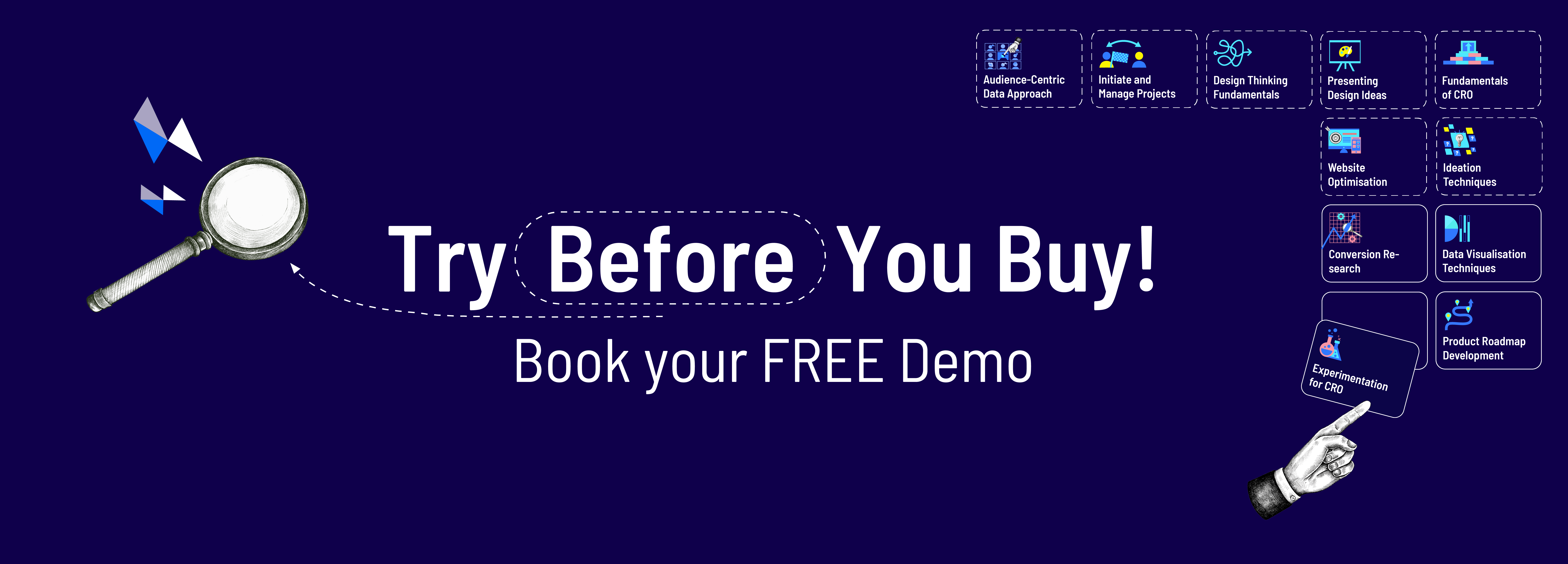
Want to speak to our Sr. Learning Consultants directly?
Schedule a call with them here.
